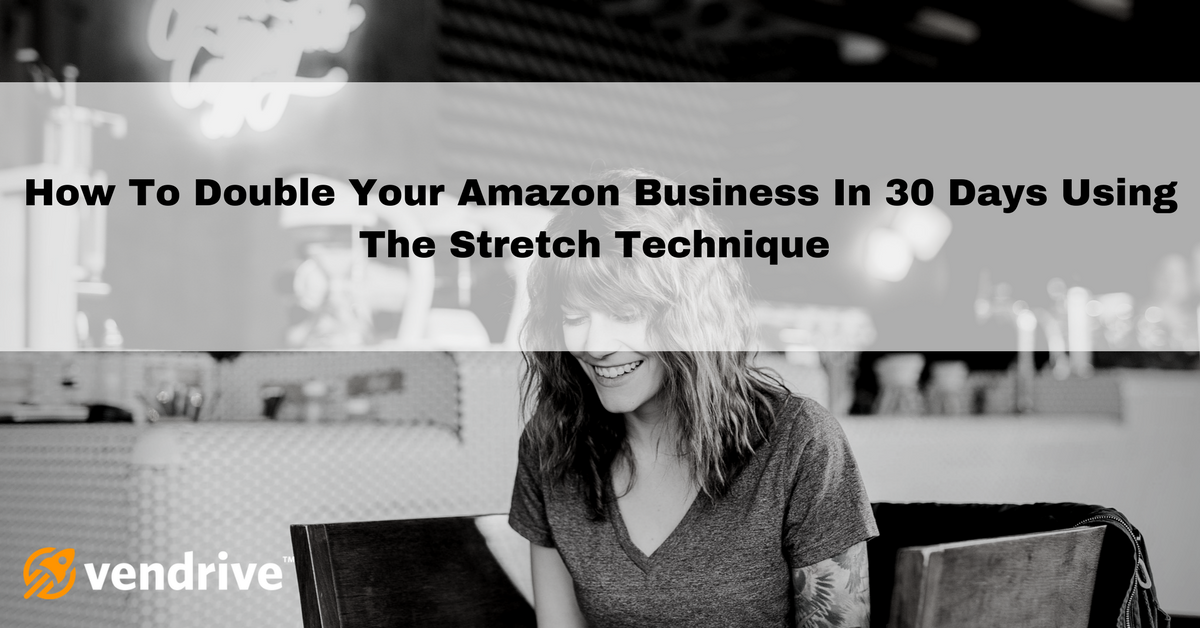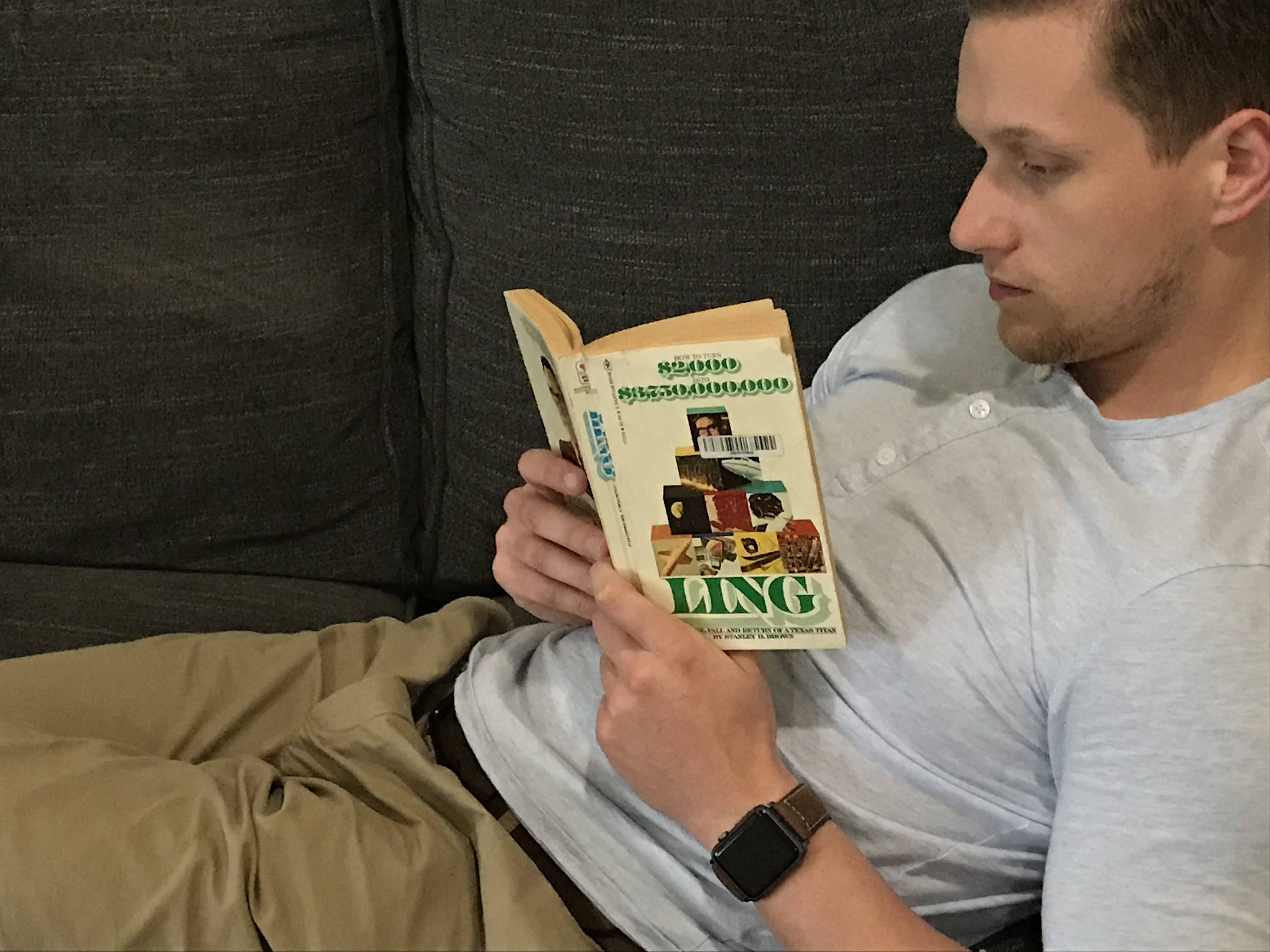
Growing a business is what I imagine raising a child is like. It’s probably just as expensive, takes up all of your time and you’re never really sure if you’re doing it right.
Reading blog post after blog post just to confirm you aren’t killing it…
The initial hurdle of successfully starting a wholesale Amazon business is understanding the strategy behind consistently acquiring new, profitable accounts.
From there, it’s pretty simple and can even be outsourced with proper training and some time. Building out the process is painless and straightforward in that you can even hire your kid to source for you (don’t worry about the trash Jimmy, you just keep sourcing!).
Overcoming this hurdle alone puts you into the top 10% of Amazon sellers. You have a clear process that is effective and consistent.
Each week you add new accounts and increase your sales volume, but at some point, you hit major hurdle number two – having too much awesome inventory but not enough cash to purchase it all.
Although it’s a great problem to have, you quickly begin to realize how much opportunity is being left on the table (known as opportunity cost).
You may be spending $30,000 every single month on inventory, but you have $70,000 in inventory you could purchase, potentially leaving another five-figures of profit for someone else to grab.
This may feel like a unique problem to have, but it’s actually very normal for the business model we’re in. Unlike our first major hurdle, this is a growth problem.
You’ll see an immediate halt to your month over month growth, which feels like a punch to the throat.
Going through this exact issue myself, I began to focus 80% of my week trying to solve this issue. I scaled back on sourcing and completely automated my restocking process.
Nothing else mattered. No other task, when solved, could have such an impact on the growth of my business. That’s when I discovered The Stretch Technique.
The Stretch Technique Discovered
I reached out to every single seven and eight-figure seller I knew for answers. Some were very open to sharing their growth secrets while others shoved me off to keep the strategies to themselves.
What I discovered was learned from a combination of high-level sellers and forgotten business books on dusty shelves in the furthest corners of bookstores.
I came out with roughly three high-yield strategies that will have an immediate impact on your business.
I’m not talking about growing an extra 5-10% each month, but immediately doubling your business within 30-60 days after implementing just one of these techniques.
Increasing your Turnover Rate or how to get a 720% return on your money every year
This was my holy grail… I sat on the other end of such an incredible Skype conversation that would change everything. It had gone against everything I’d learned so far, but once broken down, seemed so simple. How could I have grown my business to six-figures without knowing this…
The technique is so simple that I dare even call it a technique, but here it is in all its simple glory – Carry less inventory.
Let me explain…
When you first learn about the wholesale business model you’re typically told to carry a months’ worth of inventory and because of that, you’ll only place one restock order per SKU per month. Pretty simple, but it immediately sets you up for failure and stagnant growth.
Remember this: You want to keep just enough inventory to not go out of stock, but always on the verge.
If I have $10,000 to spend each month I have two options on how I spend it:
Option 1: I spend the $10,000 on inventory within one week for 30 days worth of inventory and respend that same $10,000 next month. Doing this, assuming 20% net would return $2,000 in profit for the month.
Option 2: Instead of spending $10,000 for 30 days, what if I only bought 15 days worth of inventory? Then you’d still have $5,000 in the bank Dillon! Yes, but you miss the point. I now have $5,000 to spend on NEW SKUs! In essence, I’m able to spend that same $10,000 twice… Using this option, assuming the same 20% net would return $4,400 in profit for the month.
First Turnover: $10,000 x 20% = $2,000 profit (week 1-2)
Second Turnover: $12,000 ($10k + $2,000 profit) x 20% = $2,400 (week 3-4)
Total Monthly Profit: $2,000 + $2,400 = $4,400
So without adding any new capital into the business and increasing your turnover rate, you can double your monthly profit and growth. I immediately implemented this strategy into my business and saw the results within two weeks.

Me doing the math to figure out how to double my profit in the next two weeks….
Let’s quickly assume you get 30% return on your spend. If you’re using option one from above, you’re getting 30% compounding (assuming you take nothing out and reinvest) which will give you a total return of 360% annually (30% x 12 months). Not bad at all!
Using option two, however, paints a prettier (read Bob Ross) kind of picture. Rather than a 360% return, you would have a 720% return as you would double your compound frequency from once a month to twice.
Going Net – How to get your suppliers to foot the bill for your inventory
Have you ever noticed the credit section of wholesale applications? Yea me too and after a while, I wanted to know how they could benefit me.
Although I would never suggest someone to start with net terms, it does make sense once the inventory you carry from that supplier is stable.
In other words, once I’ve carried inventory from a supplier long enough to have the certainty of sales volumes it begins to make sense to move to net 30 terms. If I routinely spend $5,000 a month with a supplier and then move to net 30 terms (assuming you’re ordering two weeks of inventory) it’s a no-brainer as I would free up that cash.
By using net terms it would then make sense to order three weeks worth of inventory because it would never lower nor increase your turnover rate as it’s a credit from your suppliers.
In this situation I would order three weeks worth of inventory to play it safe, knowing that I can move that inventory without any effort. By the time the 30 days is up and I have to pay for the inventory, it’s already been sold and given me a profit.
So I “spent” nothing and got a profit… that’s an infinite return for you and (in this case) would immediately free up $5,000 to spend on new inventory to grow.
It’s important to note that net terms should only be used when you have already tested new inventory and it’s proven a range of volume and you’ve built a decent relationship with your supplier.
I wouldn’t use net terms for all of my suppliers, so choose wisely and use this technique where it has a huge impact.
From Variable to Fixed – Once you’re this big, you need some assets like Mr. Buffet
If you’ve ever read anything by me about wholesale you’ll know that I’m a HUGE fan of prep centers. Mainly because they’re awesome, but from a business standpoint, it’s a variable cost which affords a new business owner a ton of leeway.
If I send in 1,000 units this month, I pay $1,000. If I send in 10 units next month, I pay $10. In other words, it’s not a fixed cost and can scale up or down with your business, rather than locking you into a consistent bill.
Rather than taking on a large fixed cost like a warehouse and staff, go the easier, cheaper route to get the ball rolling. This isn’t about being scrappy or frugal, it’s a good business decision.
At no point should your $100,000 a year business look like a $1,000,000 a year business. It’s fundamentally different.
At some point, fixed costs will be cheaper than variable. Shipping 1,000 units a month is probably cheaper using a prep center, but shipping 10,000 units a month would be WAY cheaper using your own warehouse.
At some point, there’s a shift where everything changes and the variable costs begin to have diminished benefits. Where warehouses and staff seemed so expensive, they could now save you $5,000+ a month in expenses, freeing up more capital to continue growing and giving you more control over your supply chain.

You finding more profit in your business from a simple decision
The best way to apply this strategy is to consistently do the math at your current level. If the math tells you that it would cost more for a warehouse and staff than use a prep center, then keep using a prep center.
But, if the math says that a warehouse and staff would be cheaper, find a warehouse, move in and cut off your prep center.
These are the simple decisions that can ensure you reach the top 5% of sellers on Amazon or not being here in a year, but make these decisions using math, not assumptions. Although they seem simple, they’re highly effective.
Bonus: The Mini-Mogul Technique – How to acquire your way to massive growth
In the back of a slightly famous local old bookstore here in Jacksonville Florida, I stumbled upon a book that would forever change the way I view business and growth. Titled Ling, The Rise, Fall, and Return of A Texas Titan.
Also on the cover of the book, How to turn $2,000 into $3,750,000,000.

Although you could easily mistake the title for some internet marketing sales copy, the book was written long ago about Jim Ling, the man who started an empire with $2,000 (worth much more today of course) and through very intelligent finance strategies built an empire so big they had to create a word to describe it.
They called it a conglomerate. We typically view selling on Amazon as this simple little business that makes some money on the side, but for those who truly want to build something amazing, there seems to be a greater amount of opportunity.
I bring up this book because Mr. Ling built his empire not by consistently starting new companies but acquiring others to immediately grow his own. Of course, he used this strategy on a grand scale, but it can be applied quite easily on a smaller one.
A few weeks ago I decided to do some research on this acquisition idea. I actually found an Amazon wholesale business being sold.
Usually, this would be a terrible acquisition as anyone could simply read the due-diligence report and go get the accounts, making the business worth nothing to a buyer.
This business was different as 90% of their inventory had exclusive deals in place with contracts lasting a year or more. Assuming those contracts could be negotiated for a longer period of time, that makes the business worth something.
Rather than working incredibly hard at gaining exclusive rights to sell products, what if you just bought the (profitable) company that owns them?
You would immediately increase your companies sales, have new exclusive rights and could leverage them to gain more. I don’t have $100,000 laying around to “acquire” a company Dillon!
The interesting thing about wholesale companies is the multiple they sell at. A multiple simply being the multiple of the annual profit a company has which is used to create a selling price for a company.
Some are higher than others, but wholesale is roughly 1-1.5 times annual profit. This company was currently doing $40,000 a year in profit and was selling at $45,000 in total with the seller willing to finance 1/3 of the cost. So for roughly $30,000 you could gain a large number of exclusive agreements, increase your annual net profits by $40,000 and have the deal done within the next 90 days.
Although this technique is really geared towards a business that has enough capital to do an acquisition deal, it does scale down even further.
Most sellers aren’t using the Turnover Technique I described above, which is a huge opportunity for you to increase the capital efficiency of the business you just acquired making it more valuable.
At a certain point it isn’t just about new suppliers, but about adding the right kind of assets into your business as a whole.
This is hands down the longest, most in-depth post I’ve written on Vendrive and I hope it helps you get to the next level.
You’ve just learned how to immediately double your business in 30 days regardless of what level you’re at, why you should be using actual math to make decisions for your business, how and when net terms make sense for your growth and how to approach business from a higher perspective.






About The Author: Dillon Carter
Hi, with James, we're building Amazon tools that we wish we had when starting our own companies. We love tech, coffee, building systems and all things Amazon.
More posts by Dillon Carter